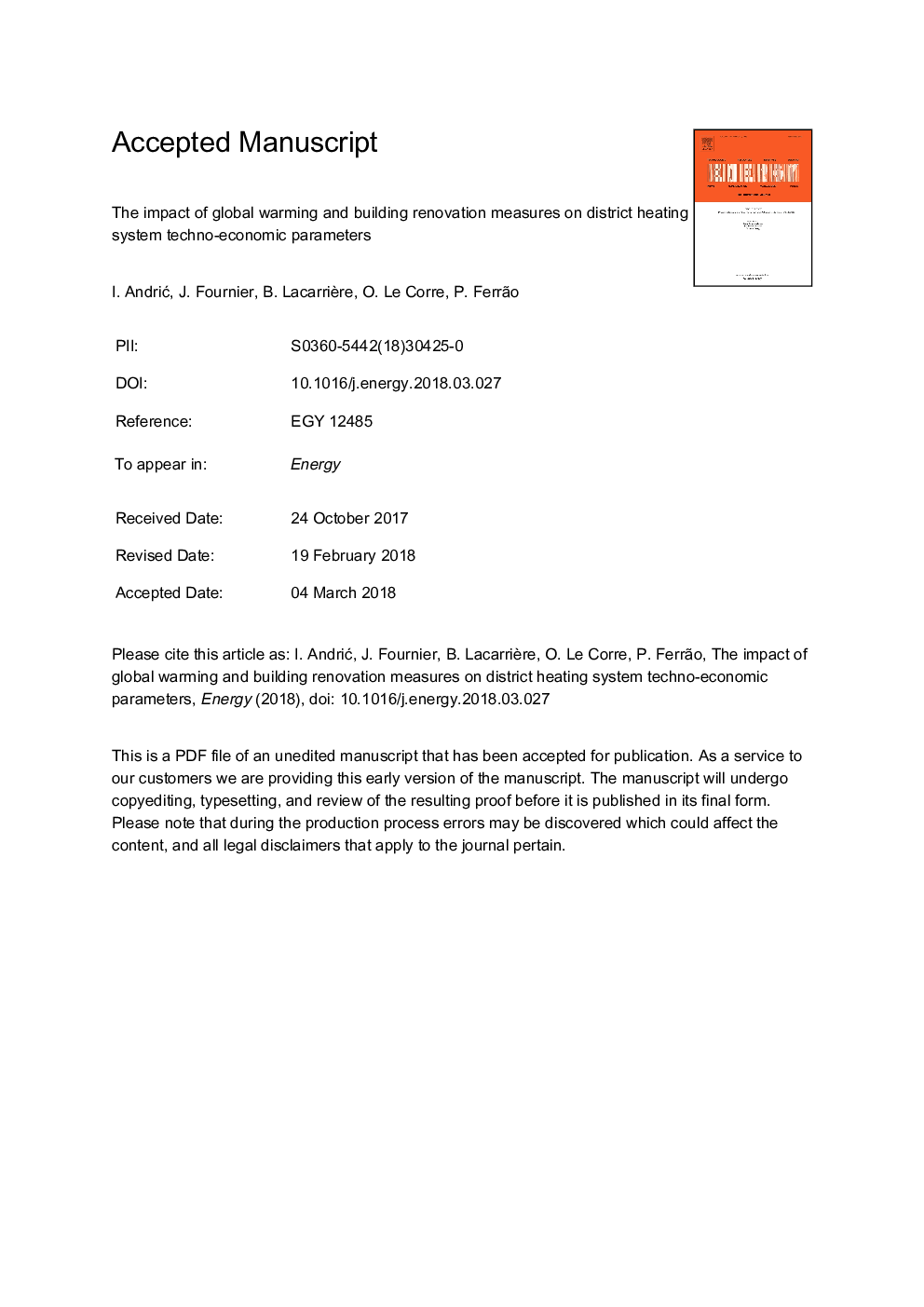| Article ID | Journal | Published Year | Pages | File Type |
|---|---|---|---|---|
| 8071932 | Energy | 2018 | 49 Pages |
Abstract
The results indicated that the decrease of heat demand proved to be the highest after the first year of renovation (2020), decreasing by 52% of the reference value (2010). Accordingly, DH linear heat density decreases bellow the profitability minimum for traditional district heating networks. The participation of natural gas peak boiler in heat production increases over the studied period, while the participation of base load biomass boiler decreases, due to the fact that the number of hours with heat demand bellow the technical limit of the base load boiler was increasing. Consequently, CO2 emission levels increased. Heat production costs increased, with higher increase rate for the scenario where the new district heating network is planned, compared to the scenario with an existing network.
Related Topics
Physical Sciences and Engineering
Energy
Energy (General)
Authors
I. AndriÄ, J. Fournier, B. Lacarrière, O. Le Corre, P. Ferrão,
